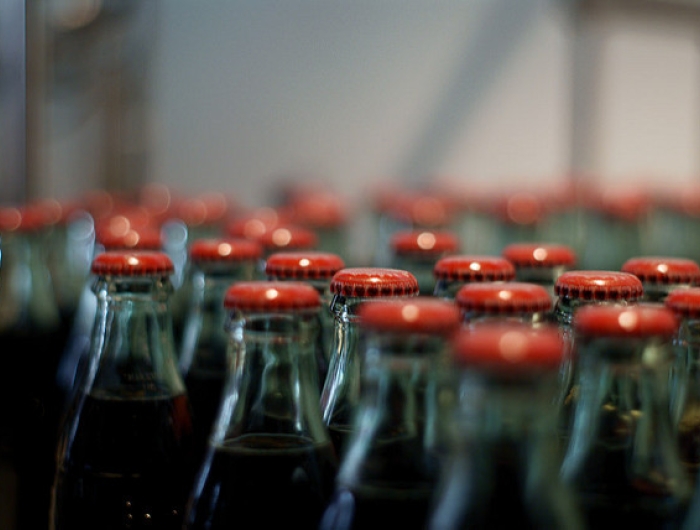Lab Tests Find Carcinogen in Regular and Diet Coke and Pepsi

Ammoniated "Caramel Coloring" Contaminated with 4-methylimidazole
New chemical analyses have found that Coca-Cola, Pepsi-Cola, Diet Coke, and Diet Pepsi contain high levels of 4-methylimidazole (4-MI), a known animal carcinogen. The carcinogen forms when ammonia or ammonia and sulfites are used to manufacture the “caramel coloring” that gives those sodas their distinctive brown colors, according to the Center for Science in the Public Interest, the nonprofit watchdog group that commissioned the tests. CSPI first petitioned the FDA to ban ammonia-sulfite caramel coloring in February 2011.
CSPI today reiterated its call to the Food and Drug Administration to revoke its authorization for caramel colorings that contain 4-MI, and in the interim to change the name of the additive to “ammonia-sulfite process caramel coloring” or “chemically modified caramel coloring” for labeling purposes.
“Coke and Pepsi, with the acquiescence of the FDA, are needlessly exposing millions of Americans to a chemical that causes cancer,” said CSPI executive director Michael F. Jacobson. “The coloring is completely cosmetic, adding nothing to the flavor of the product. If companies can make brown food coloring that is carcinogen-free, the industry should use that. And industry seems to be moving in that direction. Otherwise, the FDA needs to protect consumers from this risk by banning the coloring.”
CSPI collected samples of Coca-Cola, Pepsi-Cola, Diet Coke, Diet Pepsi, Dr Pepper, Diet Dr Pepper, and Whole Foods 365 Cola from Washington, D.C.-area stores. Pepsi’s products had 145 to 153 micrograms (mcg) of 4-MI in two 12-ounce cans. Regular Coca-Cola had 142 mcg per 12 ounces in one sample and 146 mcg in another. Diet Coke had 103 mcg per 12 ounces in one sample and 113 mcg in another.
To put those levels into context, the state of California has a 29-microgram benchmark for 4-MI. Levels above that in a serving of food or beverage may be required to bear a warning notice. Based on California’s risk model, CSPI estimates that the 4-MI in the Coke and Pepsi products tested is causing about 15,000 cancers in the U.S. population.
While federal law bans food additives that cause any number of cancers, the FDA has an exception for contaminants of food additives, for which it tolerates a lifetime risk of one cancer in one million people. Three of four samples of Dr Pepper or Diet Dr Pepper that CSPI tested had low levels of 4-MI, with about 10 mcg per 12 ounces. But even those levels pose a cancer risk of seven in one million—seven times greater than what FDA allows. The lower levels in those three samples indicate that it is possible to lower, if not eliminate, the amount of 4-MI.
Pepsi told CSPI that it has switched to a coloring in California that contains much less 4-MI and plans to do the same in the rest of the country.
“When most people see ‘caramel coloring’ on food labels, they likely interpret that quite literally and assume the ingredient is similar to what you might get by gently melting sugar in a saucepan,” Jacobson said. “The reality is quite different. Colorings made with the ammonia or ammonia-sulfite process contain carcinogens and don’t belong in the food supply. In any event, they shouldn’t be obscured by such an innocuous-sounding name as ‘caramel coloring.’”
As troubling as the new test results are, CSPI says soda drinkers should be much more concerned about the high-fructose corn syrup or other sugars used in soft drinks. Soda drinkers are much more likely than non-soda drinkers to develop weight gain, obesity, diabetes, and other health problems.

